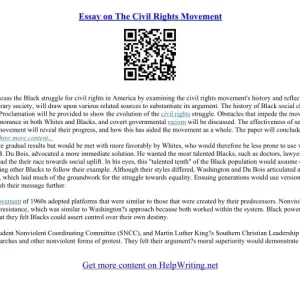
Southern Storytelling: Then & Now – Oral Histories and Modern Narratives
The South. A region steeped in history, a landscape painted with vibrant characters, and a culture woven from the threads of countless untold stories. From the whispered secrets of enslaved ancestors to the booming voices of modern-day novelists, Southern storytelling has always been a powerful force, shaping identities and preserving legacies. This exploration delves into the evolution of Southern narrative, examining the enduring power of oral histories and their influence on contemporary literary and artistic expressions.
The Whispers of the Past: Oral Histories as the Foundation
Long before the written word dominated the narrative landscape, the South thrived on oral tradition. Stories were the lifeblood of communities, passed down through generations, shaping a collective memory and preserving cultural heritage. These weren’t just tales of kings and queens; they were the everyday narratives of ordinary people—the struggles of sharecroppers, the resilience of families enduring hardship, the quiet triumphs of everyday life. These oral histories, often delivered with a captivating blend of humor, sorrow, and wisdom, formed the bedrock of Southern identity. They were, and continue to be, powerful repositories of history, often overlooked in traditional historical accounts.
| Oral History Element | Example | Impact |
|---|---|---|
| Family Legends | The tale of a great-great-grandmother’s escape from slavery. | Instilled resilience, shaped family identity. |
| Folklore & Superstition | Stories of haunted plantations, mischievous spirits. | Created a sense of community, explained the unexplainable. |
| Spiritual Narratives | Accounts of religious revivals, personal faith journeys. | Offered solace, hope, and a framework for understanding life. |
The significance of these oral histories is not simply nostalgic. They offer invaluable insights into the complexities of Southern history, often challenging dominant narratives and providing counterpoints to officially sanctioned accounts. They preserve the voices of those marginalized and silenced, offering a richer, more nuanced understanding of the past.
From Porch to Page: The Transition to Written Narratives
The transition from oral storytelling to written narratives was not a clean break. Instead, it was a gradual evolution, with authors drawing heavily upon the oral traditions that shaped their upbringing. Early Southern writers, like William Faulkner and Flannery O’Connor, infused their works with the rhythms and cadences of spoken language, capturing the essence of Southern dialect and the nuances of Southern character. Their stories, while written, echoed the storytelling traditions of their ancestors, preserving the essence of oral narratives within the confines of the printed page.
Modern Narratives: A Complex Tapestry
Contemporary Southern storytelling reflects the multifaceted nature of the region itself. It encompasses a diverse range of voices, perspectives, and experiences. While the legacy of oral tradition remains a powerful influence, modern Southern narratives explore a broader range of themes, challenging traditional stereotypes and reflecting the evolving social and political landscape. Authors are grappling with issues of race, class, gender, and sexuality with a frankness and honesty that was often absent in earlier generations of Southern writers.
| Modern Southern Narrative Element | Example | Significance |
|---|---|---|
| Reimagining the Past | Novels that re-examine the Civil War and Reconstruction from marginalized perspectives. | Offers a more inclusive and nuanced understanding of history. |
| Exploration of Identity | Stories exploring the complexities of Southern identity in a rapidly changing world. | Challenges traditional stereotypes and promotes self-awareness. |
| Focus on Social Justice | Works addressing contemporary issues of poverty, inequality, and social injustice. | Raises awareness and inspires action. |
The South’s rich tapestry of narratives continues to unfold. From the whispered memories of the past to the bold pronouncements of modern storytellers, the region’s literary and artistic expressions remain a potent force, shaping perspectives, sparking conversations, and reflecting the ever-evolving soul of the South. The legacy of oral history endures, enriching and informing contemporary narratives, ensuring that the voices of the past continue to resonate in the present and shape the future.

Additional Information
Southern Storytelling: Then & Now – A Deeper Dive into Oral Histories and Modern Narratives
The evolution of Southern storytelling from oral traditions to contemporary narratives offers a rich tapestry reflecting societal shifts, technological advancements, and enduring cultural values. While a main article might highlight the broad strokes of this transformation, a deeper analysis requires examining specific facets: the impact of the Civil Rights Movement, the role of technology in preserving and disseminating stories, the ongoing tension between authenticity and commercialization, and the emergence of diverse Southern voices.
I. The Civil Rights Movement as a Catalyst:
The Civil Rights Movement profoundly impacted Southern storytelling. Before the movement, narratives often perpetuated dominant white perspectives, glossing over or distorting the experiences of Black Southerners. The movement, however, gave voice to marginalized communities. Oral histories collected during and after this period offer crucial counter-narratives, challenging the previously accepted versions of Southern history. For example, the narratives collected by the Southern Oral History Program at the University of North Carolina at Chapel Hill document the struggles, resilience, and triumphs of individuals actively involved in the fight for racial equality. These firsthand accounts provide invaluable context often missing from traditional historical texts. The resulting shift in storytelling can be analyzed through the lens of postcolonial theory, focusing on the reclamation of narrative power and the deconstruction of colonial myths.
II. Technology and the Preservation of Oral Traditions:
The advent of audio and video recording technologies revolutionized the preservation and dissemination of oral histories. Previously reliant on unreliable memory and handwritten transcriptions, these narratives can now be archived and accessed digitally, ensuring their longevity and wider reach. Platforms like the Digital Library of Georgia and the Library of Congress offer extensive collections of Southern oral histories, accessible to researchers and the public alike. However, ethical considerations arise concerning access, copyright, and the potential for misrepresentation. Detailed analysis should consider best practices in digital archiving, including metadata tagging, accessibility features, and community engagement strategies to ensure the ethical and responsible preservation of these invaluable cultural resources.
III. Authenticity and Commercialization: A Complex Relationship:
The commercialization of Southern storytelling presents a complex challenge. While increased access to platforms like film, television, and publishing allows for broader dissemination, it also raises questions about authenticity and the commodification of cultural heritage. Popularized representations of the South, often romanticized or stereotypical, may overshadow more nuanced and complex narratives. Analyzing specific examples, such as the contrasting portrayals of Southern life in independent films versus major studio productions, can reveal this tension. Further research could examine the economic impact on storytellers themselves, exploring the delicate balance between preserving cultural integrity and securing financial viability.
IV. The Emergence of Diverse Southern Voices:
Contemporary Southern storytelling is far more diverse than its predecessors. Narratives from women, LGBTQ+ individuals, immigrants, and other marginalized groups are gaining prominence, enriching the understanding of the South’s multifaceted cultural landscape. Analyzing the works of contemporary Southern writers like Jesmyn Ward, Kiese Laymon, and Tayari Jones reveals a shift away from monolithic portrayals to a more nuanced and inclusive representation of Southern identities. Quantitative analysis could compare the representation of different demographics in contemporary Southern literature and media to historical data, highlighting the progress made and the areas requiring further attention.
V. Conclusion:
The trajectory of Southern storytelling reveals a dynamic interplay between oral traditions and modern narratives, shaped by historical events, technological innovation, and the ongoing struggle for authentic representation. A comprehensive understanding requires a multifaceted analysis encompassing historical context, technological impact, ethical considerations, and the evolution of diverse voices. Further research focusing on specific case studies, quantitative analysis, and interdisciplinary approaches will enrich our understanding of this vital aspect of American cultural heritage. This analytical approach moves beyond a simple chronological account to delve into the underlying forces shaping the narratives of the South, then and now.






